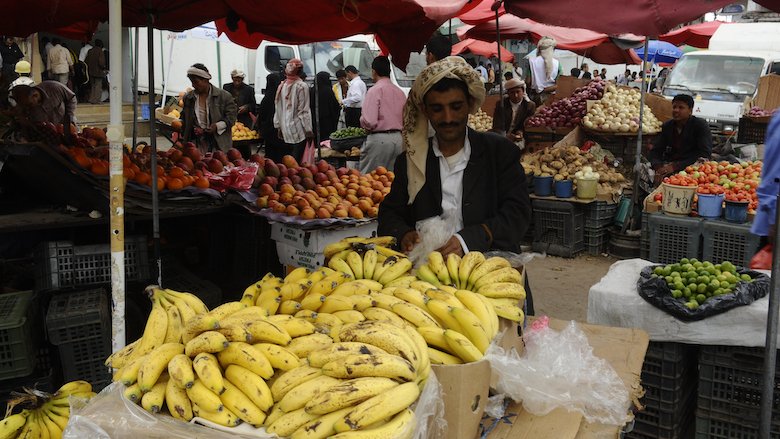Economic conditions continue to deteriorate, and the acute humanitarian crisis persists. The bifurcation of economic institutions by conflicting parties and uncoordinated policy decisions have further compounded the socio-economic crisis stemming from active conflict, now in its seventh year. Donor fatigue, soaring global commodity prices, and adverse climate conditions will continue to pose serious threat to the already dire socio-economic conditions.
Recent Developments
Available information suggests that the Yemeni economy continued to weaken in 2021, affected by macroeconomic instability, escalating hostilities, and heavy rains and flooding, which damaged shelters and infrastructure, destroyed livelihoods, and facilitated the spread of diseases. The volume of crude oil production remained significantly below the pre-conflict levels. Non-oil economic activity continues to suffer from hostilities, interruption of basic services (electricity, telecommunications), and acute shortages of inputs, which were compounded by double taxation and distortions created by uncoordinated policy decisions by the two authorities. The war in Ukraine triggered further increases in commodity prices, heightening threats to Yemeni’s already dire food access and socio-economic conditions.
Outlook
Economic and social prospects in 2022 and beyond are highly uncertain and hinge critically on a resolution of the conflict and the overall security conditions. In this context, the flare-up of conflict, coupled with surging international oil prices, would be detrimental to the private sector’s operational environment. On the upside, robust growth in GCC countries driven by rising global energy prices may boost remittance flows to Yemen. Revenue generation in Yemen as a whole will continue to be deeply challenged by an extremely low tax base.
